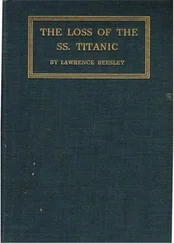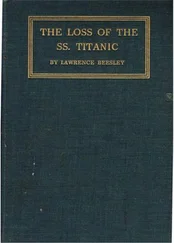Compute roughly how many acts of sexual intercourse occur each day in the world. Does the number vary much from day to day? Estimate the number of potential human beings, given all the human ova and sperm there have ever been, and you find that the ones who make it to actuality are ipso facto incredibly, improbably fortunate.
These estimations are generally quite easy and often suggestive. For example, what is the volume of all the human blood in the world? The average adult male has about six quarts of blood, adult women slightly less, children considerably less. Thus, if we estimate that on average each of the approximately 5 billion people in the world has about one gallon of blood, we get about 5 billion (5 x 10 9) gallons of blood in the world. Since there are about 7.5 gallons per cubic foot, there are approximately 6.7 x 10 8cubic feet of blood. The cube root of 6.7 x 10 8is 870. Thus, all the blood in the world would fit into a cube 870 feet on a side, less than 1/200th of a cubic mile!,
Central Park in New York has an area of 840 acres, or about 1.3 square miles. If walls were built about it, all the blood in the world would cover the park to a depth of something under 20 feet. The Dead Sea on the Israel-Jordan border has an area of 390 square miles. If all the world's blood were put into the Dead Sea, it would add only three-fourths of an inch to its depth. Even without any particular context, these figures are surprising; there isn't that much blood in the world! Compare this with the volume of all the grass, or of all the leaves, or of all the algae in the world, and man's marginal status among life forms, at least volume-wise, is vividly apparent.
Switching dimensions for a moment, consider the ratio of the speed of the supersonic Concorde, which travels about 2,000 miles per hour, to that of a snail, which moves 25 feet per hour, a pace equivalent to about.005 miles per hour. The Concorde's velocity is 400,000 times that of the snail. An even more impressive ratio is that between the speed with which an average computer adds ten-digit numbers and the rate at which human calculators do so. Computers perform this task more than a million times faster than we do with our snail-like scratchings, and for supercomputers the ratio is over a billion to one.
One last earthly calculation that a scientific consultant from M.I.T. uses to weed out prospective employees during job interviews: How long, he asks, would it take dump trucks to cart away an isolated mountain, say Japan 's Mount Fuji, to ground level? Assume trucks come every fifteen minutes, twenty-four hours a day, are instantaneously filled with mountain dirt and rock, and leave without getting in each other's way. The answer's a little surprising and will be given later.
GARGANTUAN NUMBERS AND THE FORBES 400
A concern with scale has been a mainstay of world literature from the Bible to Swift's Lilliputians, from Paul Bunyan to Rabelais' Gargantua. Yet it's always struck me how inconsistent these various authors have been in their use of large numbers.
The infant Gargantua (whence "gargantuan") is said to have needed 17,913 cows to supply him with milk. As a young student he traveled to Paris on a mare that was as large as six elephants, and hung the bells of Notre Dame on the mare's neck as jingles. Returning home, he was attacked by cannon fire from a castle, and combed the cannonballs from his hair with a 900-foot-long rake. For a salad he cut lettuces as large as walnut trees, and devoured half a dozen pilgrims who'd hidden among the trees. Can you determine the internal inconsistencies of this story?
The book of Genesis says of the Flood that "… all the high hills that were under the whole heaven were covered…" Taken literally, this seems to indicate that there were 10,000 to 20,000 feet of water on the surface of the earth, equivalent to more than half a billion cubic miles of liquid! Since, according to biblical accounts, it rained for forty days and forty nights, or for only 960 hours, the rain must have fallen at a rate of at least fifteen feet per hour, certainly enough to sink any aircraft carrier, much less an ark with thousands of animals on board.
Determining internal inconsistencies such as these is one of the minor pleasures of numeracy. The point, however, is not that one should be perpetually analyzing numbers for their consistency and plausibility, but that, when necessary, information can be gleaned from the barest numerical facts, and claims can often be refuted on the basis of these raw numbers alone. If people were more capable of estimation and simple calculation, many obvious inferences would be drawn (or not), and fewer ridiculous notions would be entertained.
Before returning to Rabelais, let's consider two hanging wires of equal cross section. (This latter sentence, I'm sure, has never before appeared in print.) The forces on the wires are proportional to their masses, which are proportional to their lengths. Since the areas of the cross sections of the supporting wires are equal, the stresses in the wire, force divided by cross-sectional area, vary as the lengths of the wires. A wire ten times as long as another will have ten times the stress of the shorter one. Similar arguments show that, of two geometrically similar bridges of the same material, the larger one is necessarily the weaker of the two.
Likewise, a six-foot man cannot be scaled up to thirty feet, Rabelais notwithstanding. Multiplying his height by 5 will increase his weight by a factor of 5 3, while his ability to support this weight-as measured by the cross-sectional area of his bones- will increase by a factor of only 5 2. Elephants are big but at the cost of quite thick legs, while whales are relatively immune because they're submerged in water.
Although a reasonable first step in many cases, scaling quantities up or down proportionally is often invalid, as more mundane examples also demonstrate. If the price of bread goes up 6 percent, that's no reason to suspect the price of yachts will go up by 6 percent as well. If a company grows to twenty times its original size, the relative proportions of its departments will not stay the same. If ingesting a thousand grams of some substance causes one rat in one hundred to develop cancer, that's no guarantee that ingesting just one hundred grams will cause one rat in one thousand to develop cancer.
I once wrote to a significant minority of the Forbes 400, a list of the four hundred richest Americans, asking for $25,000 in support for a project I was working on at the time. Since the average wealth of the people I contacted was approximately $400 million (4 x 10 8, certainly a gargantuan number of dollars) and I was asking for only 1/16,000th of that wealth, I hoped that linear proportionality would hold, reasoning that if some stranger wrote me asking for support of a worthy project of his and asked me for $25, more than 1/16,000th of my own net worth, I would probably comply with his request. Alas, though I received a number of kind responses, I didn't receive any money.
ARCHIMEDES AND PRACTICALLY INFINITE NUMBERS
There is a fundamental property of numbers named after the Greek mathematician Archimedes which states that any number, no matter how huge, can be exceeded by adding together sufficiently many of any smaller number, no matter how tiny. Though obvious in principle, the consequences are sometimes resisted, as they were by the student of mine who maintained that human hair just didn't grow in miles per hour. Unfortunately, the nanoseconds used up in a simple computer operation do add up to lengthy bottlenecks on intractable problems, many of which would require millennia to solve in general. It takes some getting accustomed to the fact that the minuscule times and distances of microphysics as well as the vastness of astronomical phenomena share the dimensions of our human world.
Читать дальше












